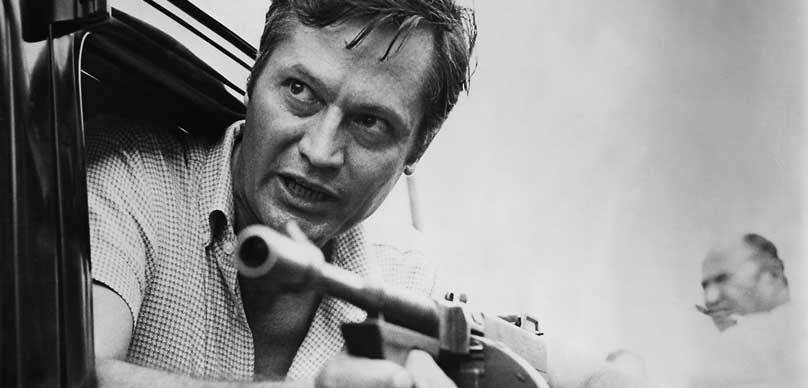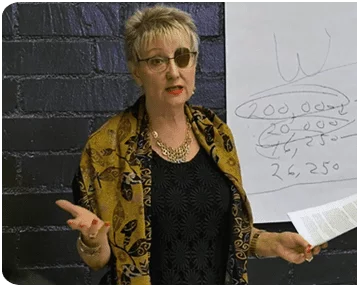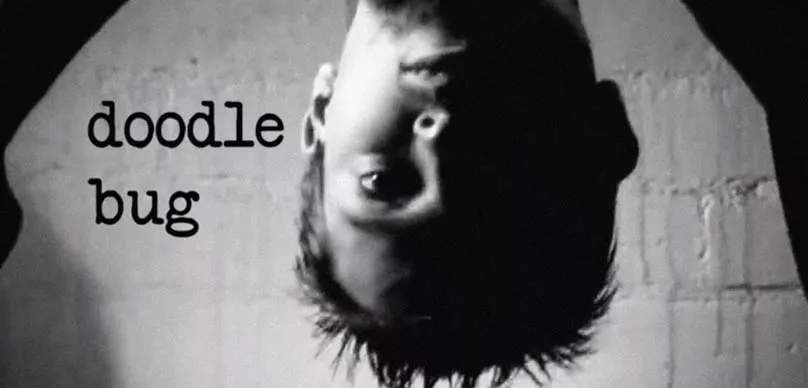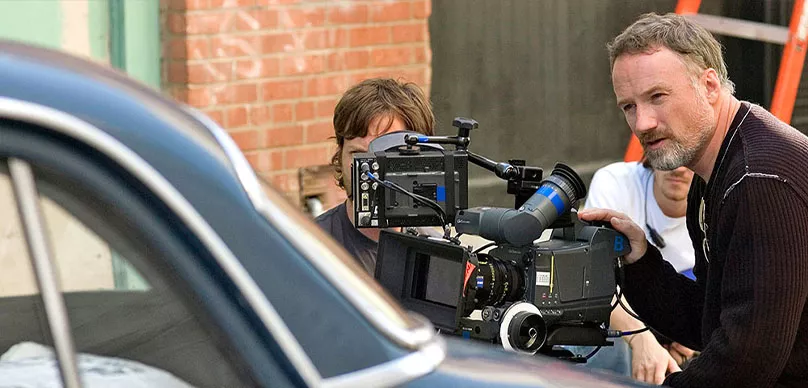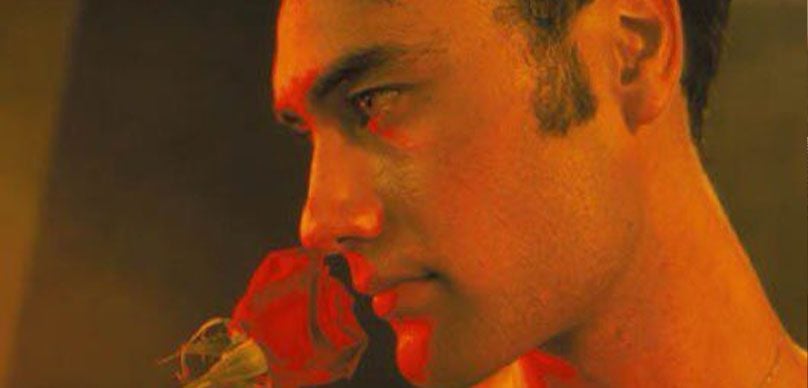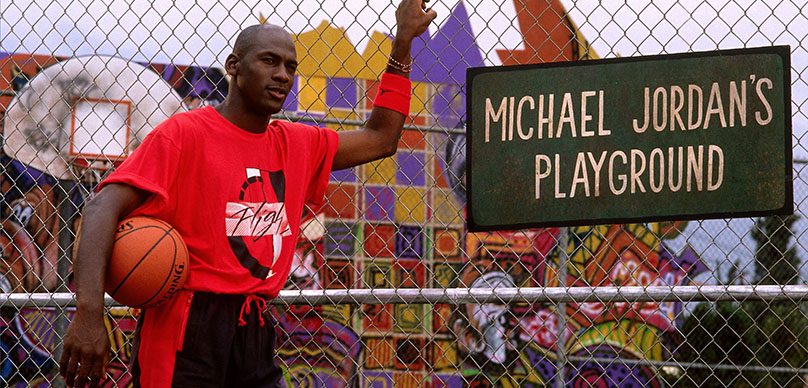Who knew you could take films with such titles as Attack of the Crab Monsters and The Saga of the Viking Women and Their Voyage to the Waters of the Great Sea Serpent so seriously? But that’s exactly what has happened for 50 odd years now.
It was easy for him because there is nothing about Roger Corman that doesn’t bleed the business of filmmaking.
But what is it that makes a man generate a filmography of 400+ produced credits?
“Motion pictures are the art form of the 20th century, and one of the reasons is the fact that films are a slightly corrupted artform. They fit this century – they combine Art and business!”
Isn’t it crazy to think that this is coming from an indie filmmaker?
“Business” is a yucky word to those of us who still starve for our art, but it seems to have worked for the man who gave the first break to Martin Scorsese, Francis Ford Coppola, Jack Nicholson, James Cameron, John Sayles, Joe Dante, Peter Fonda, Dennis Hopper, Bruce Dern, Sylvester Stallone, Diane Ladd, William Shatner, Peter Bogdanovich, Jonathan Demme, Ron Howard, and Robert De Niro among others.
Early Career
Corman went to Oxford to study English literature at the age of 20. He later moved to Paris where he worked as a copywriter for advertising agencies. In 1946, he returned to the United States and tried to re-establish himself in Hollywood. After being denied credit as a writer on The Gunfighter, he decided that he would work in film on his own.
He went back to the US under the G.I. Bill and attended Oxford University. When he worked as an assistant to agent Dick Hyland, he was an aspiring writer.
In 1951, Corman sold a script to Allied Artists for $2,000. It was titled House in the Sea. He wrote it for himself and he paid himself a commission for getting the sale. He wanted to see if he could get an offer for a full-time job.
The “Real” Film Business
Filmmaking is diverse and widely practiced art form. Some would argue there is more supply than demand so we could all learn a little bit from his personal “Art + Business” filmmaking philosophy.
“Other writers, producers, and directors of low-budget films would often put down the film they were making, saying it was just something to make money”
We have all done it. We have all made or been part of films where we felt they were just “stepping stones” to the next thing.
In Hollywood, this is done for money. In the vast population of independent filmmakers, this is done to get ahead and to eventually have a career where we can make money.
But Roger Corman was a director, writer, producer and an executive producer who always did exactly what he wanted and he never lost a dime.
I can already hear the objections…
“But he’s in LA…”
LA is not the answer to everything. With the vast distribution network available to you every time you pick up your phone, you can more than figure out how to at least attempt to get your film picked up or distributed.
If Roger Corman distributed actual film reels to theaters and he got a theatrical release out of every single one of them back in the day. I’m sure you can find an audience for a ProRes 422 render of your movie.
Louis CK shot Tomorrow Night with a modest budget and self-distributed on his website years after premiering. And now look at what he’s up too, self-distributing Horace and Pete off his own website.
“Yeah but I don’t have the audience!”
Ever heard of Cube directed by Vincenzo Natali? I hope you haven’t because it is a terrible movie but that is another example of something that developed a cult following after getting mixed reviews at best. Again, self-distributed.
Maybe your movie is the next cult classic.
“But I don’t have $1,000,000…”
Shoot low budget. Most of Corman’s films are under a million, while even some are under fifty thousand.
Oscar-nominated film Anomalisa was made with four hundred thousand and Kung Fury launched their blockbuster Kickstarter campaign with just mere thousands.
What’s your excuse?
“But I want to make art…”
Roger Corman spends his life doing exactly the kind of films that he wants to make, despite what others may think of it. It is easy to look at a film like “Dinocroc”, “Piranhaconda”, and “Supergator” and think they are garbage (they most certainly are camp) but what if that was the intent?
What if the idea was to make a “bad” movie?
Can you say that your intention to make a “good” movie be any less artistically inclined?
Art is subjective, we all know this. So the budget has nothing to do with it.
“But he has experience…”
Do you think he always had experience? You think the doctors were pulling him from the womb and said “Wait, wait… I think that’s a 35mm he’s holding! And such good framing too…”
Of course not.
He had to learn. How? By taking risks and believing in every project, putting as much work and attention into them as if each was his last.
“When I started in the late 1950s, every film I made – no matter how low the budget – got a theatrical release. Today, less that 20-percent of our films get a theatrical release.”
So why keep going? Why keep going if now you’re not going to see your films on the big screen?
With someone like Roger Corman, it’s not about that. It’s about innovating the ways in which you sell movies.
From the big screen, he moved to a television-movie model by selling his films to the SyFy Network. He survived throughout the many changes in Hollywood and in the filmmaking industry through sheer tenacity and a will to think of himself as a person who knows a little bit more than the average studio head.
Come on, we can all relate to that last part.There goes the ongoing story of Roger Corman. Still alive to this day making films, just like we all hope to be.
He made his own path through understanding the one key thing that we should all ponder about: Where do art and business meet?
Which is a question we should all ask? Wouldn’t it be in our best interest to welcome the business side instead of denying it? Art is subjective, it can be anything, but Corman has proved to us that this art form always functions in accordance with entertainment value.
Film can be whatever you want it to be despite your limitations.
It’s what puts asses in seats is sheer will and confidence of the film you made. The conviction comes off on-screen and you will be surprised at your audience’s reaction.
The lesson is not that you have to make campy films but if people want to watch a half-shark/half-octopus monster then we can know that there is an audience for everything.
It’s clear that in the greater motion picture industry, art and business are crucial inseparable elements and nowhere is that more apparent than in the life of Roger Corman.
Check out the trailer for Roger Corman’s Documentary “Corman’s World“.
CORMAN’S WORLD: EXPLOITS OF A HOLLYWOOD REBELis a tantalizing and star-studded tribute to Roger Corman, Hollywood’s most prolific writer-director-producer, and seminal influencing force in modern moviemaking over the last 60 years.
Featuring interviews with Hollywood icons and cinematic luminaries, some who launched their careers within Corman’s unforgettable world of filmmaking, including Paul W.S. Anderson, Peter Bogdanovich, Robert De Niro, Peter Fonda, Pam Grier, Ron Howard, Eli Roth, Martin Scorsese, William Shatner, and Jack Nicholson, along with many others, this documentary chronicles how Roger Corman created his cult film empire, one low-budget success at a time, capitalizing on undiscovered talent, and pushing the boundaries of independent filmmaking.
Director Alex Stapleton weaves archival footage following Roger’s illustrious career: From his early days of genre-defining classics including the original Fast and Furious, the original Little Shop of Horrors, The Crybaby Killer, The Intruder, House of Usher, and The Wild Angels (which at that point in 1966 was his 100th film) – to present-day video of him and his wife Julie on location, still at work as they continue to produce and distribute films outside the studio system: fast, cheap and out-of-this-world!
MGU Interview: Roger Corman
In this interview from the Movie Geeks United podcast, legendary director and producer Roger Corman discusses his latest project – the subscription based YouTube channel Corman’s Drive-In.
Host
I'm so honored to have an opportunity to speak to you. This is a terrific thrill for me.
Roger Corman
Well, very good. I'm familiar with Movie Geeks. I know you've had interviews with a number of people, including I think you have a Jim Cameron, a couple of guys we worked with over the past.
Host
Yes, sir. I mean, your contribution to film has meant so much to us on the show. It's, it's done a large part in shaping our consciousness and our love of film. So we appreciate you very much. I know that you've experimented with various forms of distribution to get to get your films in front of audience eyes. But what made YouTube a good fit for you, we were
Roger Corman
approached by representatives of Google who of course, own YouTube. And they have a new concept, which is they've offered individual channels to a number of independent production companies, and they chose us as one of them, they came up with the title, Carmen's drive in, which I think is a very good title. I'm not certain a young people really know what to drive in his, I had an interview at the Apple store in New York last week. And it was sent around, I don't know who everywhere more or less. And I said that I wasn't certain how many people knew what a drive in was. But on the other hand, a number of people probably were conceived and drive in. So there's some connection there.
Host
Yes. But how it's structured is you, you put out how many a month, how many films a month,
Roger Corman
we have a library of a little over 400 100 400 pictures, and we put up 30 Pictures each month. And for 399 a month, you subscribe, and you can look at all 30 Or a few of them, or none of them as you wish. And each month, we will replace those 30 with maybe 25 new ones holding a couple from the previous 30. So this can go for a long time before we reach our 400 Picture mark. And after that. After that, I don't know what we'll do, but I think we'll probably go back and intermix. And of course, we're continuing to make new pictures. So it will grow.
Host
Well, the if you go on the website now at corpsman striving on YouTube. Some of your highest profile pictures are actually already posted and available for viewing on the website. Can you can you tell me a couple of those titles?
Roger Corman
Yes, we have Eat my dust a car chase picture that Ron Howard starred in, which was a big success for us. We have Parana, the first picture that Joe Dante directed, which again, was a solid of success for us. We have stripped to kill, which is an R rated film that had a very unusual story. Police Detective is called to go underground as a stripper to solve a murder in a strip club. And it was so successful that it led to I don't know we we had murders in strip clubs, at least five different clubs, I think all you can say is it was dangerous to go to a strip club at that time. But then on the other hand, we had some very nice family films we had munchies, which was a big success for us about some little creatures, who, as a comedy attacked a family but it was really a comedy. We had the white pony a picture we shot in Ireland, which was again, a family film about a little girl who has a wild needless to say, white pony. Let me see. We had Dylan during Capone, which is a very good story. It was very successful for as Marty sheen, Martin Sheen played dill injure and the man who played who got an academy award I forgotten his name for a moment. For the Mozart picture, Amadeus Murray, Abraham F. Murray. Yes, Abraham plays Capone. We then had a cry in the wild which won a number of awards. It was a very good film that my wife produced about a boy who is lost in the wilderness and has only a hatchet to survive. The original title of the novel was hatchet and it won a Newbery Award and has been sort of a consistent bestseller among young adults, adult books, and what happened. We were ready to release it. And we put it in theory, we're going to put it in theaters and the head of one of the theater chains was talking to me and I talked about our children's picture hatchet. And he said, Well, Roger, everybody knows you make horror films. You can't go out with a children's picture called hatchet. So I realized the misunderstanding, and it became a cry in the wild. You know, Jack Nicholson's first film crybaby killer when he was 19 years old, he played a teenager who takes out a drive in restaurant hostage under some very strange circumstances.
Host
I'm deaf, I'm definitely going to ask you about your work with Mr. Nicholson. But first of all, when I when I first read the press release, announcing the channel. The first thought that came to my mind is this is terrific, it would be made even more terrific if if the if Mr. Korman did kind of an introduction to the film's and you got to behind the scenes kind of look at some of these. And and why went to the channel lo and behold, that is actually part of the content.
Roger Corman
Yes. We're fairly busy. I have two pictures that I'm editing of one picture that starts next Monday, another picture that starts in four weeks, another picture starting in September. So my time is fairly limited. But what I'm doing, I'm recording three introductions to different pictures every day. So eventually, I'll catch up with the whole 30.
Host
Yeah, that's, that's terrific. Because so many people have for Movie Geeks like myself and our audience, in particular, you are such a source of inspiration and also education for us. And a big part of your legacy has been shaped by the many people that you've that started out with you that you kind of acted as a mentor towards. And I was always curious about you, in your own life and career, who was your mentor?
Roger Corman
I don't, I don't think I really had a mentor. I graduated from Stanford with a degree in engineering. And I became the movie critic of the Stanford Daily, primarily because I found out that the they had two critics, and the critics got free passes to all the theaters in Palo Alto. So I started off just to get three free passes to the theaters then became swept up in films, but I grew up in Southern California. So I already knew some kids whose parents were in the film industry. And I just decided, engineering was not for me, but it was easier to get the degree and graduate and get out and then went into films. So I had no real mentors. Maybe I watched certain directors films, Hitchcock, particularly John Ford, Howard Hawks, Fritz Lang's films, oh, and I was always struck by the great Russian director Eisenstein, I remember did particularly a Battleship Potemkin, which I thought was very early, brilliant editing.
Host
Absolutely. And you know, you mentioned some of the foreign filmmakers that influenced you. And and you know, what I was surprised to learn when I watched the documentary The other year Corman's world was the fact that you supported and distributed quite a few foreign films. And I was curious about the the approach you took because you would program films from Bergman I believe in Fellini, but at the drive in thinking behind that.
Roger Corman
Well, that happened one time we distributors OPC Bergman, Fellini Truffaut, Caruso, Bowker's thunder for the German director, Helen Renee, a number of them and we distributed them in the normal, what were called art art house theaters in the major cities and particularly in college towns. And with the first film we distributed from Bergman cries and whispers, was very successful for us. And in the fall, it had just about finished, its run in art houses. And I was aware we put a lot of our pictures in dry bins, which was a big part of the way we distributed. And I knew that in the fall, the major studios didn't want to put their pictures in Drive ins because the business was fading, cold weather was coming in and so forth. But the drive ins were looking almost desperately for films to keep going until finally snow or something closed him down for the winter. So I just got the idea of why not put cries and whispers into driving. And I did all Most as an experiment as as sort of a funny experiment, to see if it would work. And I remember was a driving owner actually in the south in New Orleans. And he was a little surprised that to my sales manager, we called and he said, why not? We're not doing much business in the fall anyway. And we did average business. Nobody was happier than we were to do average business. And I got a letter from from Ingmar I knew him slightly thanking me for bringing we people said, you know, Bergmans gonna be really upset, you're putting his picture and drive in, and then another drivers, I got a letter from him, thanking me for bringing his pictures to a whole new audience that he had never anticipated.
Host
Absolutely, that that is actually my favorite Bergman film. And I can't imagine how wonderful it must be to watch that at a drive in that environment for that film. That's wonderful. But you know, you're going back to the documentary that was made about your Corman's world. And speaking of your beginnings with Jack Nicholson, I think one of the most touching revealing moments of Nicholson on film is from that documentary when he speaks of his reverence for you. And I was curious, when you saw that moment with Jack, what went through your mind,
Roger Corman
I was a little bit surprised that he somewhat choked up with emotion. We've been friends for a long time. Of course, his career has gone in different directions from mine. But he did his first number of films for me. And he actually wrote several pictures for me, he was a very good writer, people were people were are not aware of the fact that he's a good writer. If he had succeeded as an actor, he would have had a major career as a writer. So we've we've sort of been through the wars for many years together. And I was very touched by the things he said,
Host
It was a beautiful moment. Yeah. I want to talk to you a little bit about the state of motion picture producing in the industry as a whole. There was a high profile conversation, I think that Spielberg and Lucas gave a week or two ago, where we're Spielberg basically predicted that, in the near future, probably the big studios will suffer some major disasters, maybe four or five or half a dozen big blockbusters will flop and they'll have to rethink their, their approach. And it will result in something that we saw in the late 60s, early 70s, where they'll have to kind of redefine the business. Do you see that on the horizon? Or do you think that's very much a lost kind of place in the past that we'll never get back?
Roger Corman
I think there's a vague truth to it. As a matter of fact, I've been quoted over the last couple of years as saying somewhat similar statement. They're making these one and $200 million pictures and more. And I've said a couple of times that one or two of these films are going to fail, and they already have, and the day will come when more than one or two, maybe three or four will fail, and they will start to rethink what they're doing. And I think I agree, I agree with Steve. But I think it will not go as far as he says, I think they will simply broaden their production base. They will continue making these big blockbusters. But they'll be somewhat more careful. Now. They're just sort of saying, okay, Batman has been successful. Let's make Batman 72 Superman is successful at the moment, let's make five more Superman's or 10 More, or whatever. But enough of them I think are going to fail. That they will say, All right, we will continue making these films, but we'll be a little more choosy as to what we will make and the questionable ones. We're not going to go with of course, what was it? William Goldman, Academy Award winning screenwriter made a great statement. Nobody knows anything. And it's almost correct. But I think most people know something, but we don't know, at all. So I think they'll try to predict a little more carefully and they will go, I think to a broader base. Right now, some of the most interesting films are being made by independent producers on lower budgets, and a number of those are quite successful and they've been also dominating Academy Awards and other award ceremonies. That increases their visibility. So I think so I think the studios will start to go a little bit in that direction, but they will not give up totally on the blockbusters.
Host
Right, right. It's really felt the film theatrical experience has really become akin to a theme park ride, I think but but the positive note here is that there are many other avenues for the independence to break through whether it's on demand or online, and then the process has become a lot more democratic. But that has to make you happy.
Roger Corman
Yes, that's one of the reasons for Corman's drive. And we see that the amount of playing time in theaters for independence is shrinking. I wouldn't say it's zero, but it's not too much above zero. And as a result, we have to look for other means of distribution. The independents do play theaters, to a certain extent. And they will undoubtedly, as matter of fact, they might even increase their share a little bit because a number of the big combs are failing. And there's enough of an audience that wants to see a different type of film. But also DVDs have been very important to us. However, DB DVDs are slowing a little bit in their sales, they're not slowing as much as some people think they are. But it's definitely a downward curve. And Carmen's drive in is a way to make it as you say, more democratic, we can go straight to our audience, we can eliminate the middleman I've nothing against theater owners and distributors. But we can go straight from our own production facility to the audience. We can deliver the film's for a fraction, I mean, 30 pictures a month for 399. It's pretty tough to beat that, that price. So I think this is one of the ways that films are going to be distributed in the future.
Host
I think so too. And it's incredibly exciting to me. I want to ask you about something about your Honorary Oscar, because every year on the show, we do a series where our kind of memo to the academy and before they announce their Honorary Oscar winners, and for years, we kept pushing for Roger Corman, Roger Corbett, he deserves what this is our plea. And so we were so pleased to see that you got what and what was that evening like being up there and actually holding an Oscar?
Roger Corman
Well, it was a double evening, because the honorary lifetime Oscars are given at the governor's ball, which is a big party for the members of the academy. So they actually present you with the skirt, the governor's ball, and each person gives a little short speech. And I talked about the importance of the independence, and of the fact that independence at the moment are more innovative, and are more experimental and creative than many of the majors and it was important to nurture that creativity. Then we got a second time around at the actual Oscar broadcast, where Lauren Bacall and I both got them that year. And they announced this and we were we stood up which we were told to do. And the audience stood up and started applauding and it was going on and on. I thought well, this is enough. And I started to sit down and they kept applying. So I stood up again. Then a little while later Lauren started to sit down. They kept uploading, so she stood up. And finally it came to an end. And when we sat down she said, Well, we really screwed that one up. I said no, no, Lauren, they like us.
Host
They love you. Absolutely. You know when I announced that you're going to be on the show. We had so so much enthusiasm from for many of our listeners. And I invited them to submit a question for you. I picked a couple if you'll indulge me just for a few moments. One of our listeners Nilus ri, I believe is the name of the way you pronounce it. She has a question. Is it a big challenge when you're working with a low budget to to make those kind of budgetary restrictions not affect the storytelling?
Roger Corman
It is a challenge. And sometimes you can find a way to do an effect inexpensively that's better than doing the conventional way. I remember when I Shot Machine Gun Kelly. We had a limited number of sets and he was supposed to rob back this was a small And it was a minor sequence. And there was no way we could build a back set, of course, just a short sequence. So I thought about it. And when I did, we built a door and a little bit of a wall and had Charlie Charlie Bronson a was his first starring role playing Kelly, go into the bank with a submachine gun. And then we see the shadow on the wall of the quick robbery he pulls. And the critics particularly the French critics, praised my thinking in showing the robbery through a shadow. They weren't aware that I done it only because I didn't have enough money to build a set.
Host
Well, it really does force you to make more creative decisions, because it's not something you can throw money at as so many films and studios do. I think that's exceptional. I think that's a major part of what makes makes your film special and the independent films in general. The Christopher wants to know what it was like to work with Vincent Price.
Roger Corman
It was really a great pleasure. To work with Vincent. He was my first choice for the first of my adhere Allan Poe pictures. Roderick usher in the Fall of the House of Usher. Because he almost was sure he was a cultivated, intelligent, sensitive man and actor, he fit the role perfectly. And as we made more pictures together, we became friends and I began to appreciate how intelligent he was his comments on the scripts we would make I pretty much shoot a script 80% the way it's written, but I modify it a little bit with the actors as we're shooting as almost every director does, and Benson's comments and insights were very, very good. Plus, he was just a good guy.
Host
And finally, last question, this is comes from Matthew, this is a good one. Having included lots of subversive social commentary and a lot of your movies. What is the one socio political topic you have yet to explore but like to
Roger Corman
alright, I it takes me a moment to think about that in the intruder. I dealt with racial prejudice. And it was Bill Shatner's first picture as matter of fact, just come out from New York, he was a Broadway actor. And for that film, got great critical reviews, won a couple of minor film festivals, but was not so successful commercially. After that, I tried to deal with these patterns. on sort of a subtextual level, if it was a gangster picture, it would be a gangster picture. But underneath, there would be as we say, in method acting subtext as in bloody mama, the mob Barker gang, the story underneath, there was a concept of the dispossessed farmers and poor people. In this case, it turned to crime during the Depression. If there were any social situation today, take me a moment to think of something one of the first I would do and I don't know exactly how it can be done, but it can be done. And that is the growing disparity between the inequality between the rich and the poor. I read some statistics recently, that we have the greatest differential as it were in wealth since before that he pression and the stock market crash of 1929. And statistically, when there's been this great disparity in income, there has been some sort of social upheaval, which took place in 1929 and in the 30s, and led to all of the reforms of Roosevelt and the New Deal. I'm not certain there's going to be any great social upheaval, but it is a situation that worries me and concerns me
Sign up to receive email updates
Enter your name and email address below and I'll send you periodic updates about the podcast.

